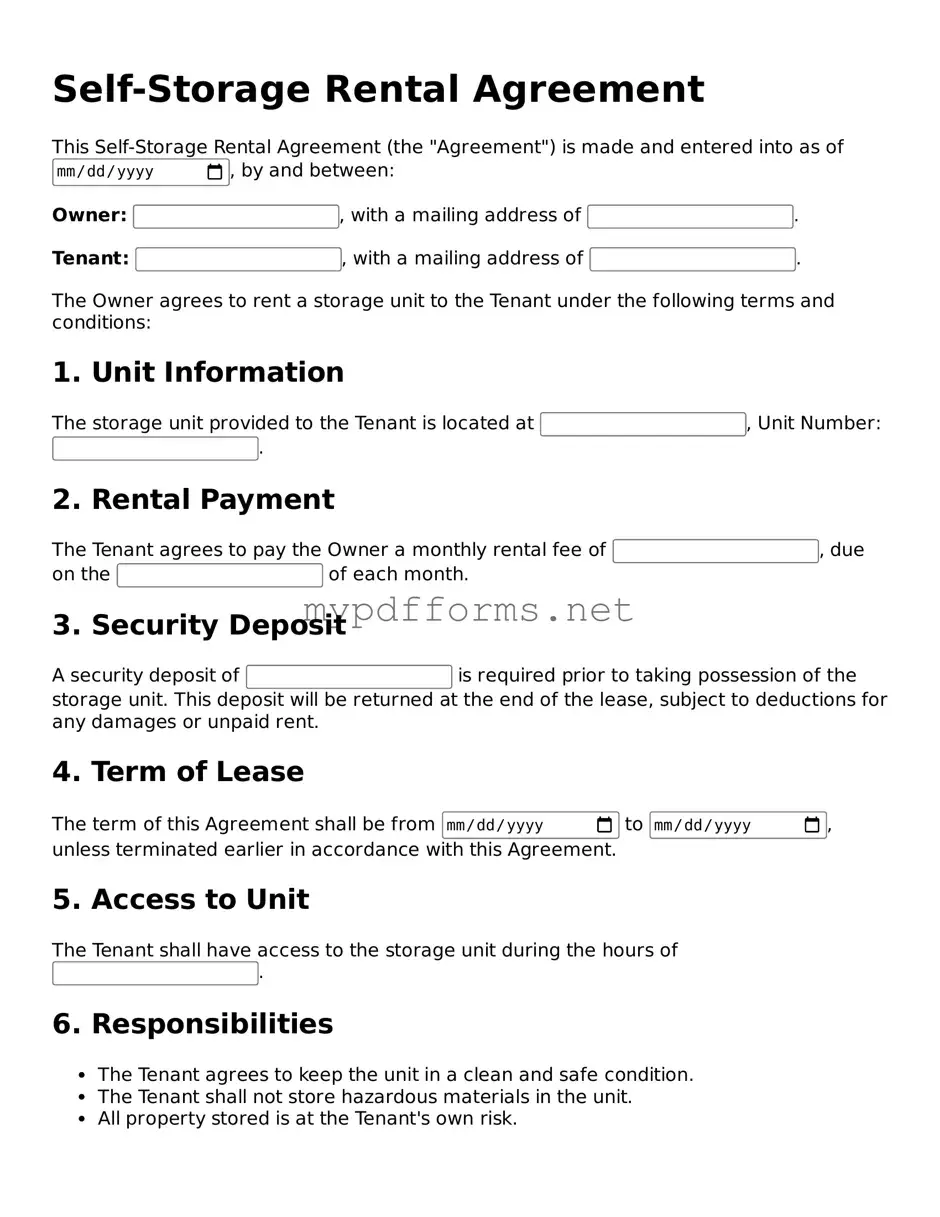When renting a self-storage unit, a Self-Storage Rental Agreement form serves as a crucial document that outlines the terms and conditions of the rental arrangement. This form typically includes essential information such as the identities of both the tenant and the storage facility owner, the specific location and size of the storage unit, and the duration of the rental period. Additionally, it details the rental fees, payment schedules, and any applicable late fees, ensuring that both parties have a clear understanding of their financial obligations. The agreement often covers rules regarding access to the unit, security measures in place, and the responsibilities of the tenant concerning the maintenance of the unit. Importantly, it may also address the procedures for terminating the agreement, including notice requirements and potential penalties. By carefully reviewing and signing this document, tenants can protect their belongings while ensuring compliance with the facility's policies, ultimately fostering a smooth and transparent rental experience.
